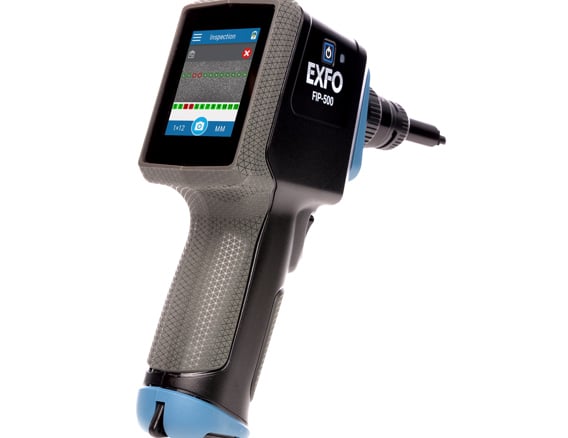A beginner’s guide to optical measurement system applications
All You Required to Know About Robotic Vision and Its Applications in Advanced Optical Measurement Solutions
Robotic vision represents a considerable development in the crossway of computer vision, expert system, and maker learning. This modern technology enhances the accuracy of optical dimension systems, allowing real-time data evaluation and improved quality assurance. Its impact covers numerous industries, from manufacturing to health care. The progressing landscape of robot vision increases questions regarding future capacities and applications. What advancements exist ahead in this transformative field?
Recognizing Robotic Vision: Secret Concepts and Technologies
Robotic vision incorporates the technologies and techniques that make it possible for makers to translate and recognize visual information from their setting. This field combines elements of computer vision, expert system, and artificial intelligence to promote computerized decision-making based on visual information. Key ideas include photo processing, which involves the enhancement and analysis of photos to draw out significant attributes, and item acknowledgment, which enables equipments to determine and classify things within a scene.

The Assimilation of Robotic Vision With Optical Dimension Solutions
As sectors increasingly require accuracy and efficiency, the combination of robotic vision with optical dimension systems has become a transformative approach. This synergy enables robotics to perceive and analyze their environments, boosting the ability of optical dimension systems to analyze and examine objects with unmatched accuracy. By furnishing optical sensors with innovative imaging innovations, robotic vision allows real-time data collection and handling, promoting instant changes to dimension specifications.
The combination encourages automated systems to find variations in measurements, surface area top quality, and placement, which are crucial in quality control processes. Enhanced algorithms, such as artificial intelligence, more enhance this assimilation by improving the systems' capacity to adjust to different atmospheres and circumstances. The integration not only simplifies dimension procedures however additionally lessens mistakes, making certain that products meet stringent market criteria, therefore strengthening the duty of robot vision in the future of optical measurement systems.
Applications of Robotic Vision in Manufacturing
In contemporary manufacturing environments, using vision systems has actually reinvented production procedures by enabling makers to execute jobs with remarkable precision and speed. Robotic vision systems are significantly employed for quality assurance, where they inspect products for defects and guarantee adherence to requirements. These systems use cameras and progressed formulas to evaluate products in real-time, significantly decreasing the danger of human error.
Furthermore, robotic vision helps with automation in production line, allowing robots to properly recognize parts and construct them with minimal downtime. This modern technology also improves supply management, as vision systems can keep an eye on supply levels and discover inconsistencies, guaranteeing a smooth supply chain.
In addition, robot vision help in the execution of wise manufacturing facilities, where data from vision systems can be integrated with various other modern technologies to optimize process. Generally, the her explanation applications of robot vision in making show its vital function in boosting performance, top quality, and productivity across various sectors
Robotic Vision in Health Care: Transforming Person Care

In rehab, robot vision aids in keeping an eye on individual progression and tailoring treatment sessions to specific demands. It sustains doctor by automating tasks such as data collection and patient surveillance, permitting more time to focus on straight patient communication. Additionally, robotic vision enhances telemedicine by making it possible for remote diagnosis and online consultations, connecting the void between people and doctor. On the whole, the application of robotic vision in healthcare is reinventing patient treatment, causing boosted outcomes, efficiency, and individual satisfaction.
Future Trends and Advancements in Robotic Vision Modern Technology
The rapid evolution of robotic vision innovation guarantees to better improve its applications across numerous fields, consisting of healthcare. Future trends indicate a considerable change towards integrating artificial intelligence and equipment understanding, making it possible for systems to gain from substantial datasets and boost accuracy with time. Boosted sensing unit modern technologies and deep learning formulas are expected to refine item recognition capacities, allowing robots to analyze complex atmospheres better.

The assimilation of enhanced reality (AR) with Related Site robotic vision will likely reinvent just how robotics help in surgical treatments and diagnostics. This harmony will facilitate real-time information visualization, improving decision-making processes. In addition, miniaturization of elements will lead to even more compact and functional robotic vision systems suitable for a selection of tasks. As these check developments unravel, markets will witness enhanced automation and performance, solidifying robot vision as a keystone of cutting-edge technical solutions.
Often Asked Concerns
What Are the Key Elements of a Robot Vision System?
The major components of a robot vision system include cams for image capture, cpus for data evaluation, formulas for analysis, and actuators for motion. With each other, these aspects make it possible for robotics to perceive and communicate with their environment effectively.
Exactly How Does Robotic Vision Improve Accuracy in Measurements?
Robotic vision boosts dimension precision by utilizing sophisticated imaging modern technologies, allowing specific things detection and spatial analysis. This capacity decreases human mistake, increases repeatability, and enables for real-time changes, eventually enhancing overall measurement dependability and performance.
What Industries Benefit Most From Robotic Vision Modern Technology?
Various markets benefit significantly from robotic vision technology, consisting of manufacturing, healthcare, agriculture, and logistics. These fields make use of enhanced precision, effectiveness, and automation, causing enhanced efficiency and reduced functional expenses in their respective processes.
Can Robotic Vision Solutions Work in Low-Light Issues?
Robotic vision systems can undoubtedly work in low-light problems, making use of sophisticated sensors and formulas to boost picture clearness. This capacity enables them to carry out properly in different settings, consisting of commercial and monitoring applications, despite marginal illumination.
What Are the Prices Related To Carrying Out Robotic Vision?
The costs connected with carrying out robotic vision differ substantially, affected by components such as cams, software program, and assimilation. Extra expenses include maintenance, training employees, and prospective upgrades to existing systems, which can accumulate with time.